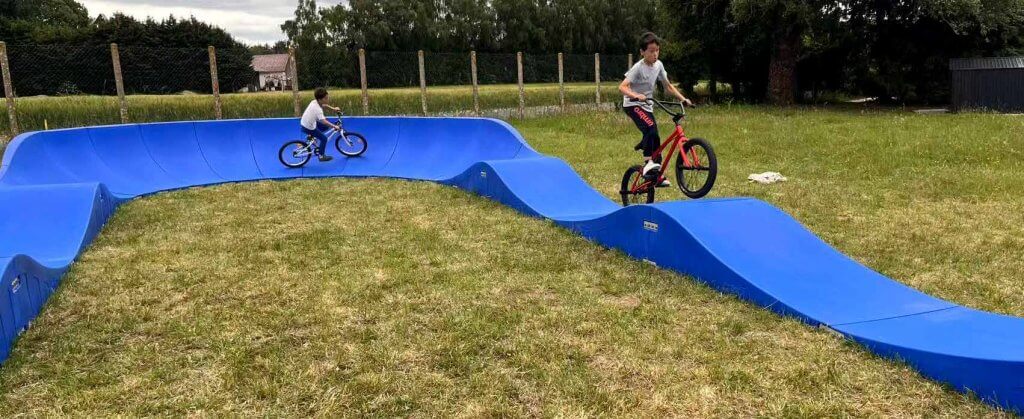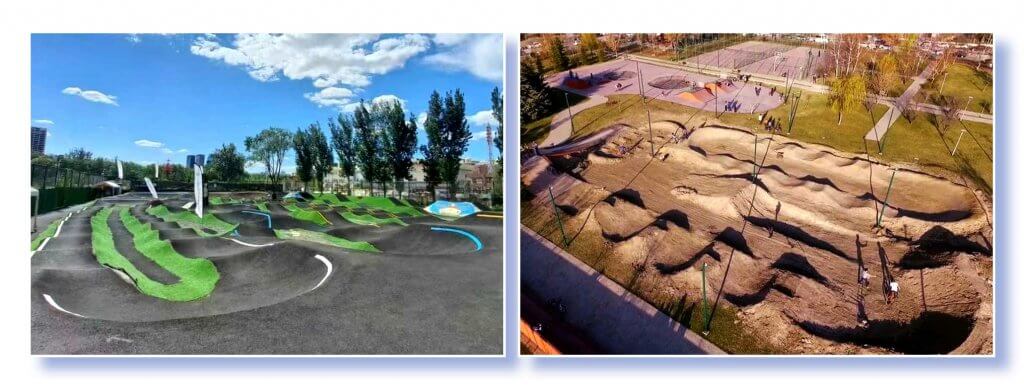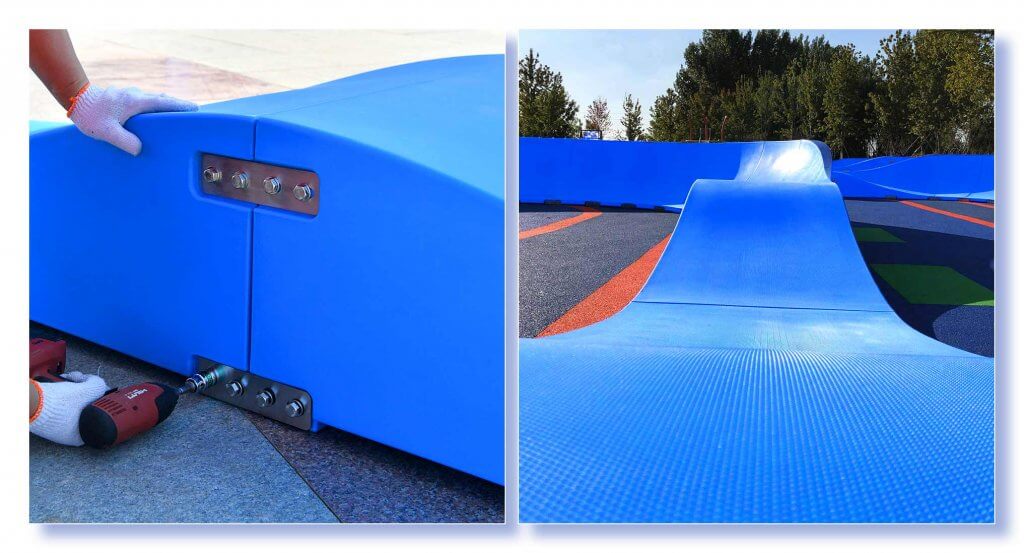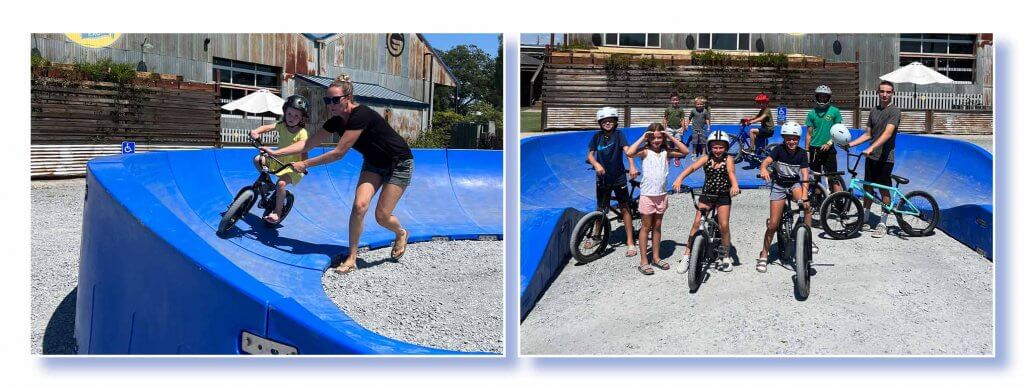All You Need to Know About Pump Tracks

Pump tracks are like outdoor playgrounds on wheels. They’re circular paths with berms and rollers, perfect for bikes, skateboards, and scooters. The fun part? You don’t pedal. You move your body up and down to keep going. This “pumping” action makes it exciting. It’s great for kids and adults alike. These tracks bring people together. They turn empty spaces into lively spots. Whether you’re new or a pro, pump tracks offer a safe way to have fun. They boost skills and build community spirit.
The History and Evolution of Pump Tracks
Pump tracks originated as compact dirt circuits, initially designed for BMX and mountain bike training and racing. These early tracks were built from packed earth—simple yet functional. However, they were highly susceptible to weather; rain could turn them muddy, while sun and use led to erosion and ruts. Maintaining them required constant, labor-intensive effort to keep the surface rideable. As their popularity grew, builders began experimenting with more durable materials like asphalt and concrete. These surfaces offered greater longevity and a smoother, faster ride, though they came with significantly higher construction costs and were permanent fixtures. The real breakthrough arrived with modular track systems, constructed from interlocking panels of plastic or composite materials. These modern tracks are not only highly durable and weather-resistant but also relatively quick to install and can be reconfigured or relocated. This innovation democratized access, allowing pump tracks to be built easily in public parks, schools, and even private residences, fueling their global proliferation.

How Pump Tracks Work
The core principle of a pump track is to generate momentum through technique rather than pedaling. Riders achieve this by actively “pumping”—using their legs and arms to push the bike down into the dips and compress the suspension, then pulling up and absorbing the bike over the bumps. This rhythmic transfer of weight and energy converts the track’s contours into forward thrust. While the motion feels intuitive after practice, it requires coordination to master. The continuous sequence of rollers and banked turns (berms) teaches vital skills like bike-body separation, balance, speed management, and cornering. Riders of any skill level can benefit: newcomers can navigate at a slow pace to learn the basics, while advanced riders can pump aggressively to achieve high speeds, catch air, and link turns seamlessly. It provides a full-body workout, building core strength, endurance, and bike handling skills in a fun, engaging, and low-risk environment, making it an exceptionally effective training tool for all disciplines of cycling.
Materials That Make Pump Tracks Special
Pump tracks come in different materials. Each has its pros and cons. Here’s a look:
| Material | Good Points | Bad Points |
| Dirt | Cheap, natural feel | Deformation due to rainwater immersion |
| Wood | Easy to shape | Slips when wet |
| Concrete | Tough, long-lasting | Expensive to build |
| Plastic | Weatherproof, movable | Higher upfront cost |
Plastic stands out. It handles heat, cold, and wet days. It’s also easy to move or change. This flexibility fits any space. The surface stays safe and grippy. It’s a top pick for lasting fun.

Benefits of Pump Tracks for All Ages
Pump tracks are for everyone. Kids learn balance and coordination. Adults stay active. Families can ride together. They’re safe with smooth surfaces. This builds confidence. Pros use them to train for races. Communities grow stronger too. People meet and share tips. It’s a place to make friends. Plus, it keeps you fit. A quick ride burns energy and lifts your mood. This mix of fun and fitness makes pump tracks a hit.

Where Pump Tracks Fit: From Parks to Backyards
Pump tracks go anywhere. Parks turn into activity hubs. Schools add them for playtime. Backyards become kid zones. Their modular design makes it simple. You can set them up fast. Change the layout anytime. They fit small or big spaces. No need for big permits like concrete tracks. This ease brings joy to more places. Communities thrive with these spots. It’s a way to enjoy the outdoors anytime.
Real Stories: Pump Tracks in Action
Pump tracks are making waves. One RV park added one for guests. Cyclists and skaters love it. A sports park in a big city built one for all ages. It’s a family favorite now. A skatepark owner uses it for events. Rentals bring in extra cash. Even a doctor put one in his yard. His grandson races friends there. These stories show how pump tracks work. They lift local vibes and personal brands.
Building Your Reputation with Pump Tracks
Owning or using a pump track says something. It shows you care about fun and fitness. For businesses, it draws crowds. A shiny track can impress visitors. It hints at your quality and creativity. Riders gain respect too. Mastering the track builds their name. Regular use keeps your image strong. It’s a cool way to stand out. Take pride in it. Others will notice your effort.
Introducing ULTRAPUMPTRACK as Your Pump Tracks Supplier
Based in China, ULTRAPUMPTRACK brings years of pump track expertise. We craft durable, modular tracks with a focus on quality. Our team blends old skills with new ideas. Fast shipping and top-notch service are our promises. We supply tracks to boost your space or business. Check out our designs and see the difference.
Conclusion
Pump tracks offer everything about fun and fitness. They’ve grown from dirt trails to modern modular designs. You can ride them anywhere, from parks to home. The benefits hit all ages and skill levels. Real-life uses prove their worth. This setup lifts your personal or business vibe. With the right care, pump tracks will keep rolling for years.
FAQs
What’s everything about how pump tracks work?
You ride by moving your body, not pedaling. Push and pull over bumps to gain speed. It’s easy to learn and fun with pump tracks.
What materials are used in pump tracks?
They can be dirt, wood, or concrete. But plastic is one of the best choices. It lasts and works with pump tracks in any weather.
How long do pump tracks last?
A good one lasts 8-10 years. With a 5-year warranty, pump tracks hold up well with care.
Can kids use pump tracks safely?
Yes, they’re safe for kids. The anti slip design helps. It’s a great start with pump tracks for all.

